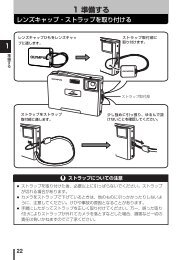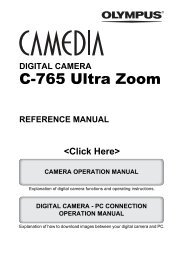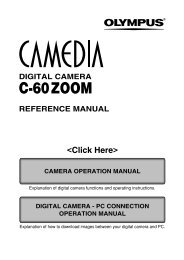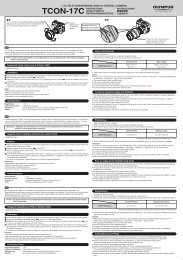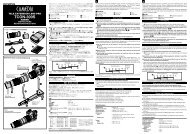Create successful ePaper yourself
Turn your PDF publications into a flip-book with our unique Google optimized e-Paper software.
6<br />
Exposure, image and color<br />
White balance—Adjusting the color tone<br />
Color temperature<br />
The spectral balance of different white light sources is rated numerically by color<br />
temperature—a concept of physics, expressed using the Kelvin (K) temperature<br />
scale. The higher the color temperature, the richer the light in bluish tones and the<br />
poorer in reddish; the lower the color temperature, the richer the light in reddish<br />
tones and the poorer in bluish.<br />
It follows, then, that the color temperatures of fluorescent lights make them<br />
unsuitable as artificial light sources. There are gaps in the hues from the color<br />
temperatures of fluorescent light. If these differences in hue are small, they can be<br />
calculated with color temperature and this is called correlated color temperature.<br />
The 4000K, 4500K and 6600K preset settings in this camera are correlated color<br />
temperatures, and should not be considered strictly as color temperatures. Use<br />
these settings for shooting conditions under fluorescent lights.<br />
94<br />
Candle frame<br />
More Red More Blue<br />
Hot white light<br />
bulb<br />
Intense white<br />
fluorescent<br />
White fluorescent<br />
Clear day<br />
Overcast<br />
Shade on clear<br />
day<br />
Daylight<br />
fluorescent<br />
TIPS<br />
White balance with a flash:<br />
T Auto WB is recommended when taking pictures with the flash. If you intend<br />
to use preset WB, select the color temperature 6000K.<br />
When shooting with the flash, be sure to play back your pictures and check<br />
the color on the screen. Various conditions affect color temperature and how<br />
color is reproduced on the screen.<br />
Note<br />
The color temperatures for each light source indicated in the above scale are<br />
approximate. They are not an accurate indication of color. For example, the<br />
actual sunlight is not exactly 5<strong>300</strong>K, nor fluorescent lights 4000K.





